Assume that the nuclear binding energy per uncleon (B/A) versus mass number (A) is as shwon in Fig. Use this plot to choose the correct choice (s) given below:

Fusion of two nuclei with mass numbers lying in the range of 1<A<50 will release energy
Fusion of two nuclei with mass numbers lying in the range of 51<A<100 will release energy
Fission of a nucleus lying in the the mass range of 100<A<200 will release energy when broken into two equal fragments
Fission of a nucleus lying in the mass range of 200<A<260 will release energy when broken into two equal fragments
The correct Answer is:B, D
(A) for 1<A<50, on fusion mass number for compound nucleus is less than 100
⇒ Binding energy nucleon remains same
⇒ No energy is released
(B) For 51<A<100 on fusion mass number for compound nucleus is between 100 & 200
⇒ binding energy per nucleon increases
⇒ Energy is released.
(C) For 100<A<200, on fission, the mass number of product nuclei will be between 50 & 100
⇒ Binding energy per nucleon decreases
⇒ No energy is released
(D) For 200<A<260, on fission, the mass number of product nuclei will be between 100 & 130
⇒ Binding energy per nucleon increases
⇒ Energy is released.
Topper's Solved these Questions
- BOOK - ALLENCHAPTER - SIMPLE HARMONIC MOTIONEXERCISE - Comprehension #13videos
SIMPLE HARMONIC MOTION
- BOOK - ALLENCHAPTER - SIMPLE HARMONIC MOTIONEXERCISE - Comprehension #23videos
SIMPLE HARMONIC MOTION
- BOOK - ALLENCHAPTER - SIMPLE HARMONIC MOTIONEXERCISE - Exercise-05(B)46videos
SIMPLE HARMONIC MOTION
- BOOK - ALLENCHAPTER - RACEEXERCISE - Basic Maths (Wave Motion & Dopplers Effect) (Stationary waves & doppler effect, beats)25videos
RACE
- BOOK - ALLENCHAPTER - TEST PAPEREXERCISE - PHYSICS4videos
TEST PAPER
Similar Questions
Assume that the nuclear binding energy per nucleon (B/A) versus mass number (A) is as shown in figure. Use this plot to choose the correct choice(s) given below.
(a) Fusion of two nuclei with mass numbers, lying in the range of 1<A<50 will release energy.
Fusion of two nuclei with mass numbers lying in the range of 51<A<100 will release energy.
(c) Fission of a nucleus lying in the mass range of 100<A<200 will release energy when broken into two equal fragements.
(d) Fission of a nucleus lying in the mass range of 200<A<260 will release energy when broken into two equal fragments.
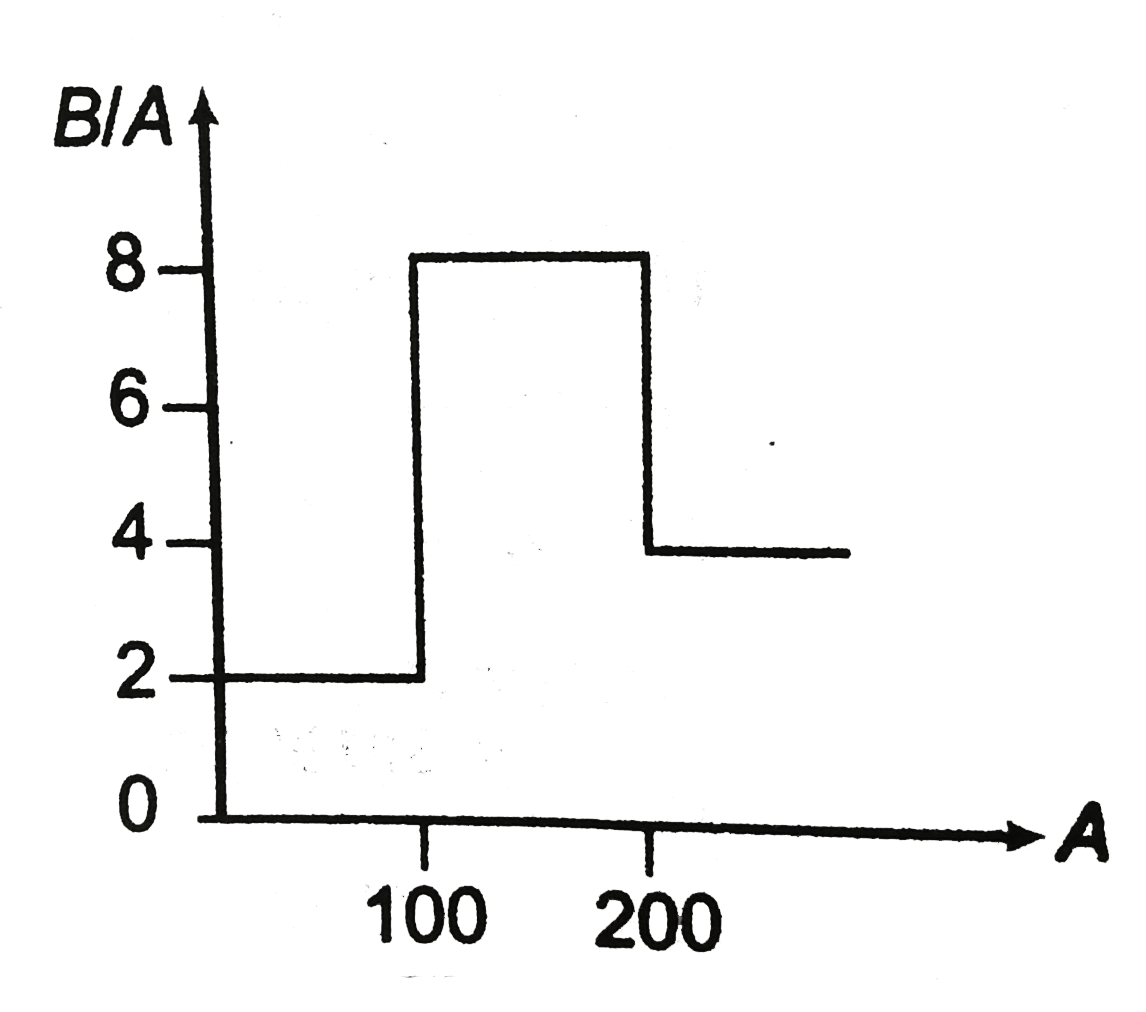 View Solution
View SolutionThe dependence of binding energy per nucleon, BN on the mass number, A, is represented by
View Solution
Knowledge Check
- Question 1 - Select One or More
Assume that the nuclear binding energy per nucleon (B/A) versus mass number (A) is as shown in the figure. Use
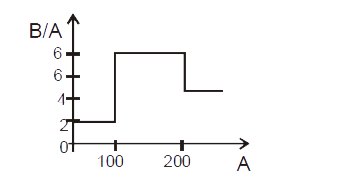
this plot to choose the correct choice(s) given below. FigureAFusion of two nuclei with mass numbers lying in the range 1 lt A lt 50 will release energyBFusion of two nuclei with mass numbers lying in the range of 51 lt A lt 100 will release energyCFission of a nucleus lying in the mass range of 100 lt A lt 200 will release energy when broken into two equal fragmentsDFission of a nucleus lying in the mass range of 200 lt A lt 260 will release energy when broken into two equal fragments. - Question 2 - Select One or More
Assume that the nucles binding energy per nucleus(B/A) versus mass number (A) is as shown in the figure Use this plate to choose the energy the correct (s) given below
 Afusion of two nucleus with mass number typing in the range of 1<A<50 will release energyBfusion of two nucleus with mass number typing in the range of 51<A<100 will release energyCfusion of a nucleus typing in the mass of100<A<200 will release energy when broken into two equal fragmentsDfusion of a nucleus typing in the mass range of200<A<260 will release energy when broken into two equal fragments
Afusion of two nucleus with mass number typing in the range of 1<A<50 will release energyBfusion of two nucleus with mass number typing in the range of 51<A<100 will release energyCfusion of a nucleus typing in the mass of100<A<200 will release energy when broken into two equal fragmentsDfusion of a nucleus typing in the mass range of200<A<260 will release energy when broken into two equal fragments - Question 3 - Select One or More
From the graph of binding energy (B.E.)vs mass number plotted as shown , identify the correct option (s)
 AOrder of stability of nucleus is D<A<C<B.BIf 'D' undergoes breakage to give 'C' then energy must be supplied.CIf 'A' and 'B' combine to form 'D' then energy must be supplied.DIf 'C' undergo breakage into two fragments of equal mass number then energy will be released.
AOrder of stability of nucleus is D<A<C<B.BIf 'D' undergoes breakage to give 'C' then energy must be supplied.CIf 'A' and 'B' combine to form 'D' then energy must be supplied.DIf 'C' undergo breakage into two fragments of equal mass number then energy will be released.
Binding energy per nucleon plot against the mass number for stable nuclei is show in the figure. Which curve is correct ?
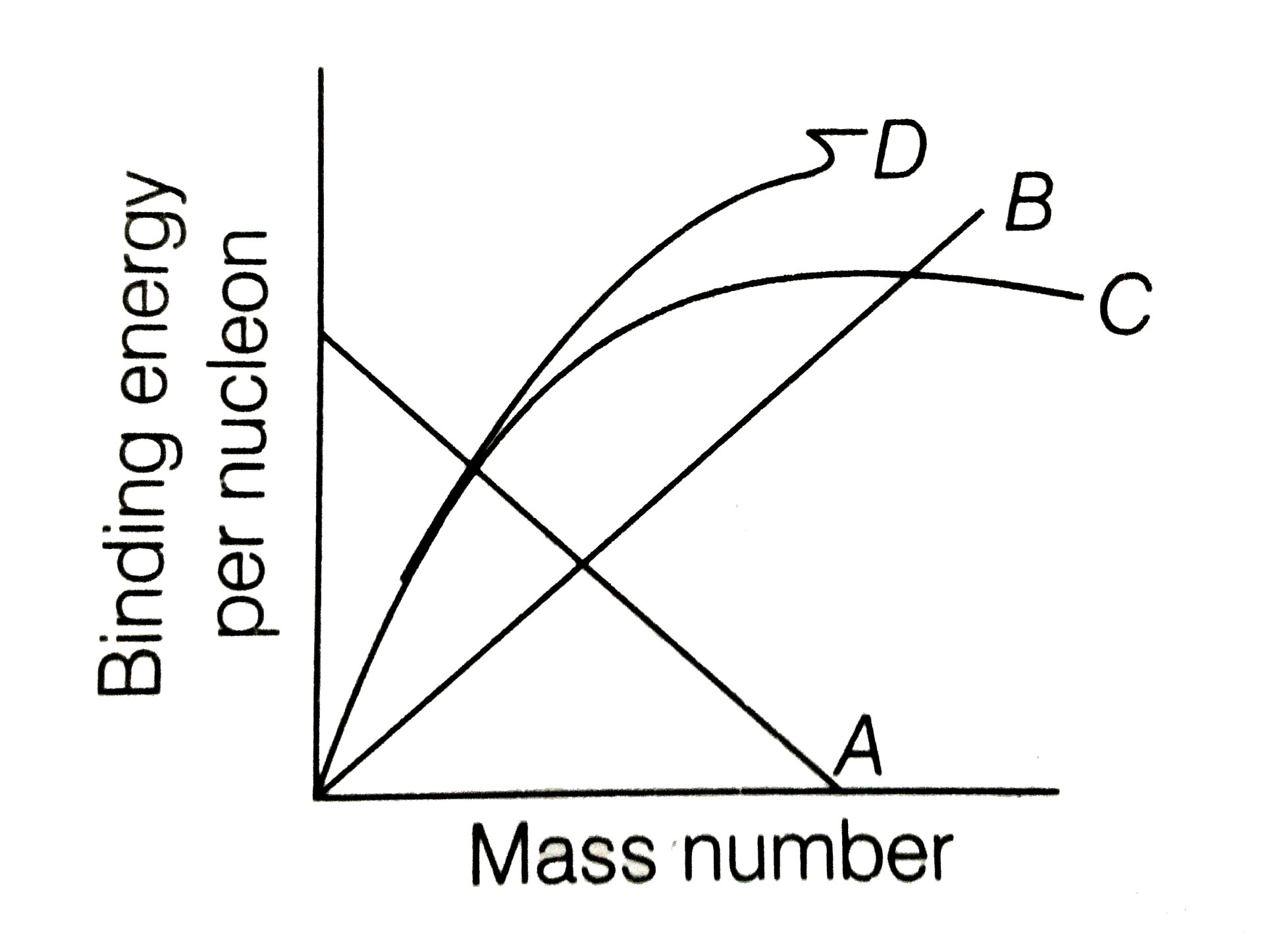 View Solution
View Solution(a) Explain the processes of nuclear fission and nuclear fusion by using the plot of binding energy per nucleon (BE/A) versus the mass number A.
(b) A radioactive isotope has a hald -life of 10 years. How long will it take for the activity to reduce to 3.125%.View Solution(a) Explain the processes of nuclear fission and nuclear fusion by using the plot of binding energy per nucleon (BE/A) versus the mass number A.
(b) A radioactive isotope has a half-life of 10 years. How long will it take for the activity to reduce to 3.125%?View Solution(a) Write the relation for binding energy (in MeV) of a nucleus AZX of atomic number ‘Z’ and mass number ‘A’ in terms of the masses of its constituents — neutrons and protons.
(b) Draw a plot of binding energy per nucleon versus mass number ‘A’ for 2≤A≤240. Use this graph to explain the release of energy in the process of nuclear fusion of two light nuclei.View SolutionThe dependence of binding energy per nucleon, BN on the mass number, A is represented by.
(a)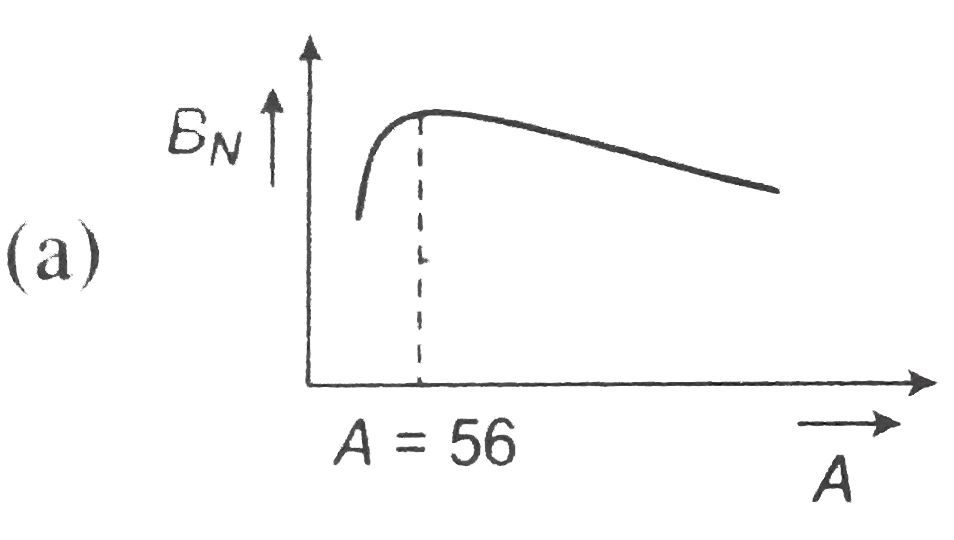 , (b)
, (b) 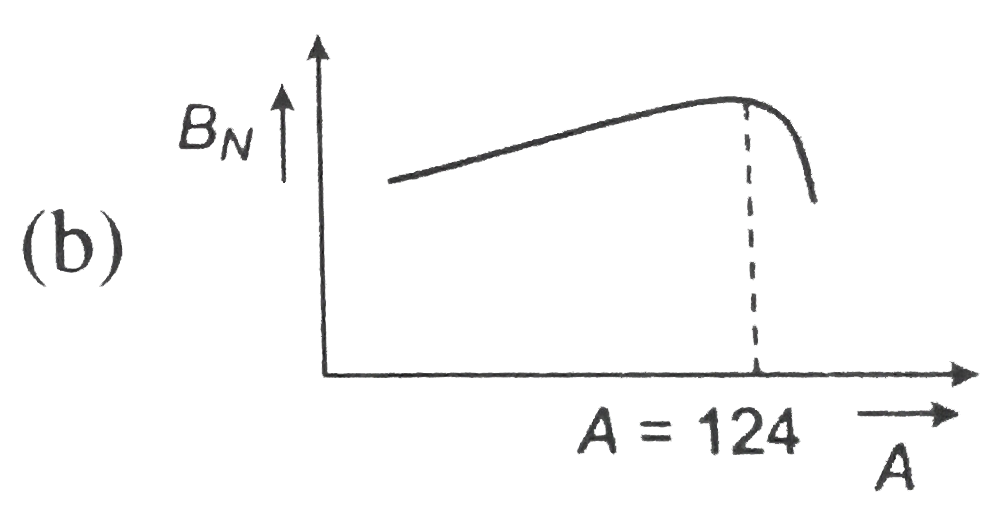 ,
,
( c)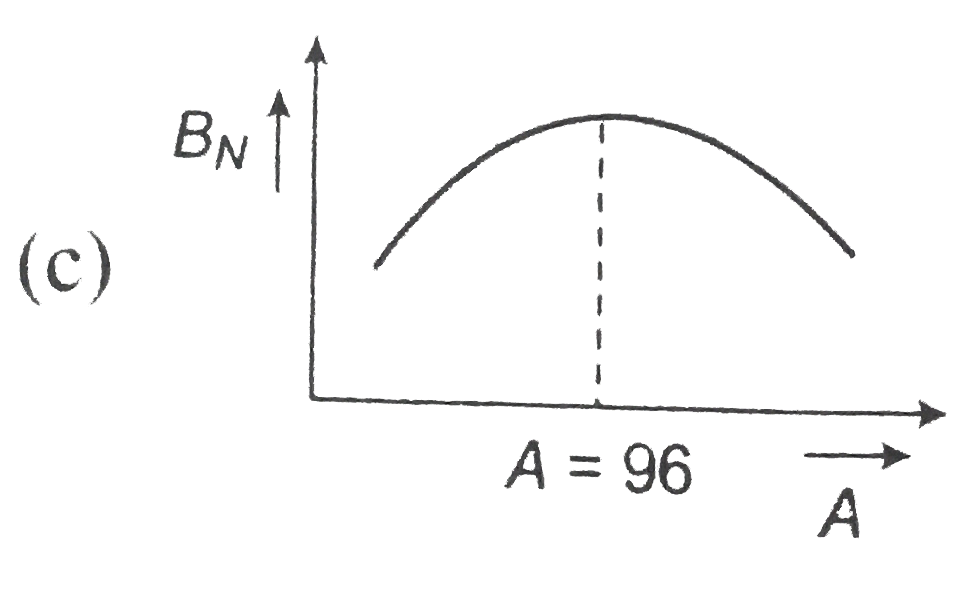 , (d)
, (d) 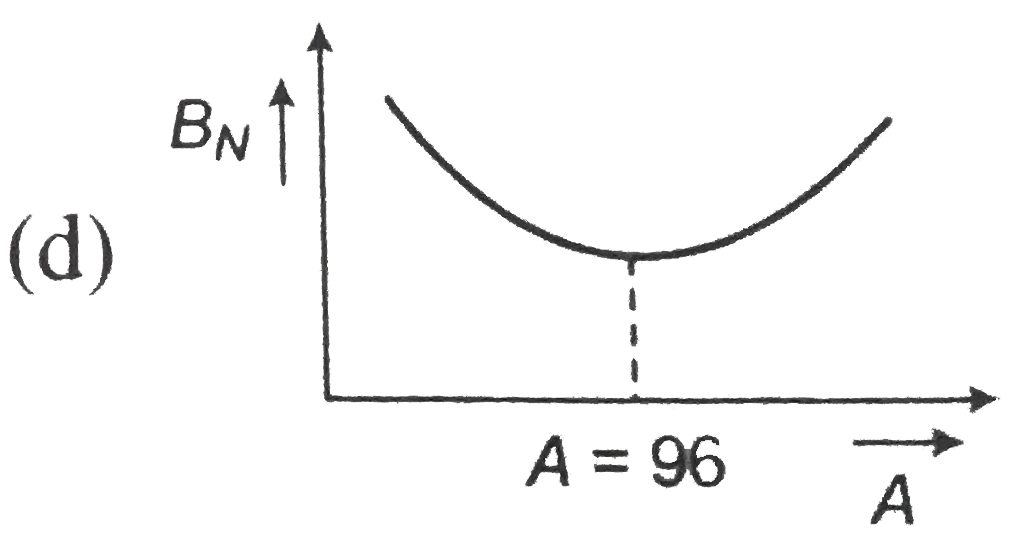 .View Solution
.View Solution

